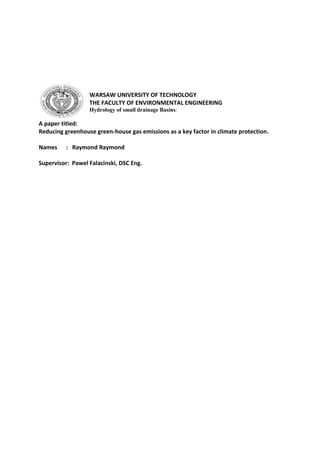Transportation accounts for approximately 14% of global greenhouse gas emissions. Climate change is a pressing issue that must be addressed to avoid major environmental consequences. This paper examines strategies to reduce greenhouse gas emissions from the transportation sector, including improving engine and fuel technologies as well as implementing mobility management approaches. Engine technologies like hybrids and fuels like ethanol can help lower emissions, but the best results depend on developing alternatives from renewable sources. Mobility management, including road pricing and promoting low-speed transportation, has demonstrated potential to significantly decrease carbon dioxide emissions. Overall, a variety of solutions will be needed to curb the rising emissions expected from continued population and economic growth.



